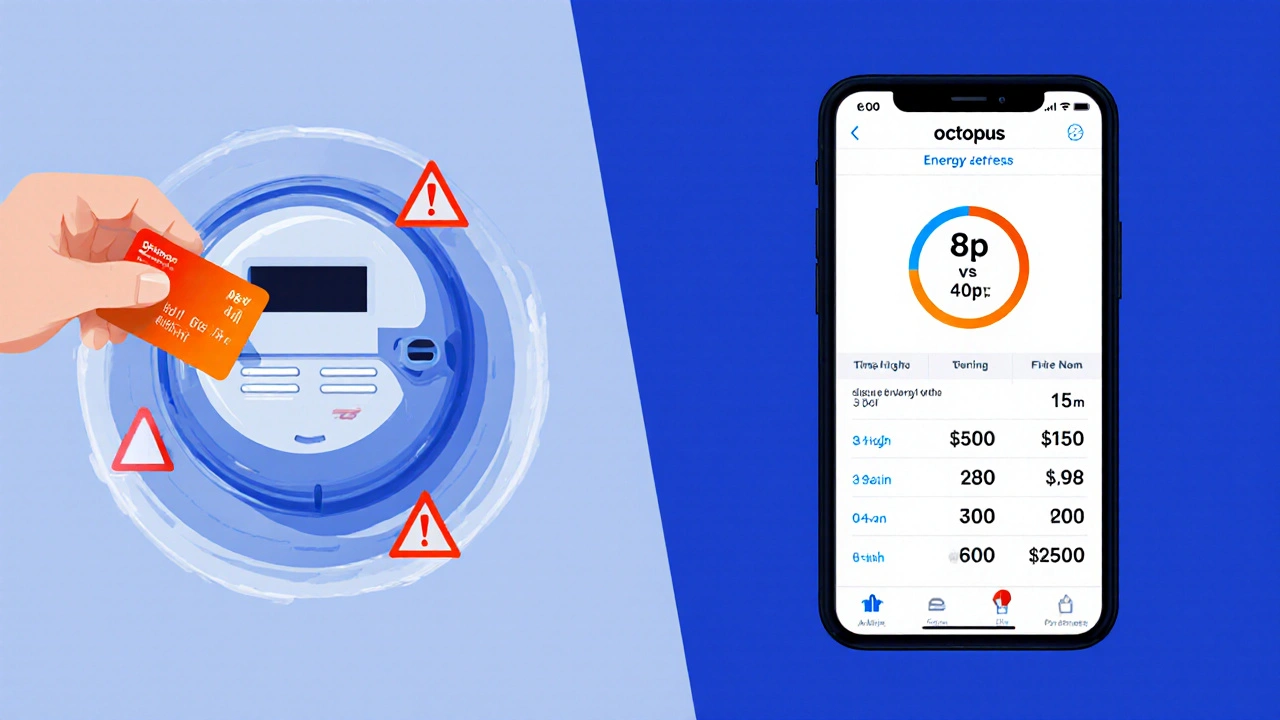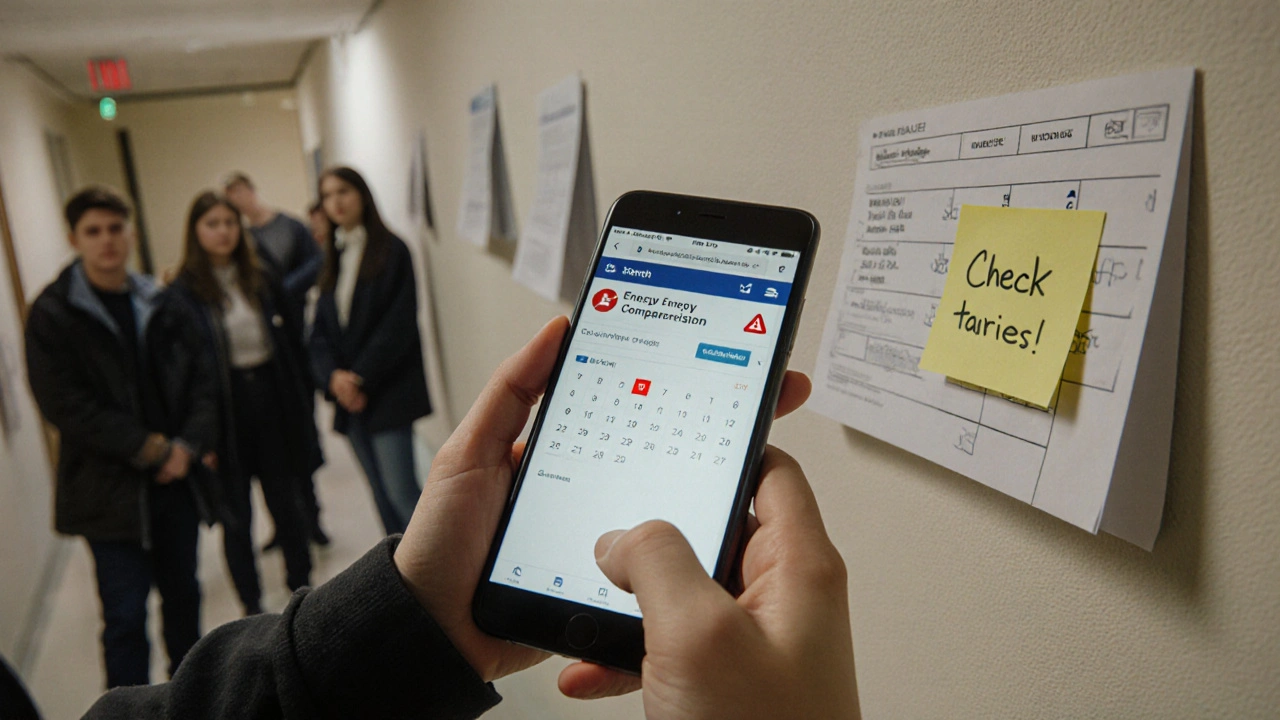
Why UK energy bills feel confusing for students
When you’re a student living in the UK, your energy bill doesn’t just show numbers-it shows a maze of charges, tariffs, and terms that can make you feel like you’re being overcharged even when you’re trying to save. You’re not alone. Many students pay more than they should because they don’t understand what’s on their bill. The good news? Reading your energy bill isn’t rocket science. Once you know what each section means, you can spot mistakes, switch plans, and cut costs without needing a finance degree.
What’s actually on your UK energy bill?
Most UK energy bills follow a standard layout, even if the design changes between suppliers like British Gas, EDF, Octopus, or Ovo. Your bill usually has six key parts:
- Account details-Your name, address, account number, and billing date. Double-check this. If your name is wrong or your address is outdated, you could be billed for someone else’s usage.
- Energy usage-This shows how much gas and electricity you used in kilowatt-hours (kWh). It’s usually broken down by day, month, and year. If you’re on a fixed tariff, you’ll see your usage compared to the same period last year.
- Cost per kWh-This is your unit rate. For electricity, it’s often between 20p and 30p per kWh. For gas, it’s usually 4p to 7p per kWh. Multiply this by your usage to get your energy cost before standing charges.
- Standing charge-A daily fee you pay just to be connected to the grid. It’s typically 20p to 60p per day for electricity and 10p to 30p for gas. This adds up to £10-£25 a month, no matter how little energy you use.
- Payments and credits-Shows how much you’ve paid this billing period and any credits (like from a previous overpayment or refund).
- Total amount due-The final sum you owe. This should match your usage + standing charges minus any payments or discounts.
How to spot hidden fees and overcharges
Some energy suppliers sneak in extra costs that aren’t obvious. Watch out for:
- Variable tariffs-If your bill says your rate is changing next month, you’re on a variable tariff. These often go up after your fixed deal ends. Students should avoid these unless they’re on a very short-term stay.
- Exit fees-Some suppliers charge £30-£50 if you leave before your fixed term ends. Check your bill or contract before switching.
- Direct debit overpayments-If you’ve been paying more than you use, you might have a credit balance. Don’t ignore it. You can ask for a refund or reduce your monthly payment.
- Discounts that expire-Many suppliers offer a £50-£100 discount for the first six months. After that, your bill can jump 30% or more. Always check the renewal rate on your bill.
Understanding energy subscriptions and prepayment options
Some students use prepayment meters because they’re required by landlords or because they’ve had trouble paying bills in the past. These work like a pay-as-you-go phone. You top up with a key or card, and energy stops when your credit runs out.
But here’s the catch: prepayment tariffs are often more expensive. You might pay 30% more per kWh than someone on a direct debit plan. If you’re on prepayment and can switch to direct debit, you could save £200-£400 a year.
There are also energy subscription services like Octopus Energy’s Octopus Agile or British Gas’s Smart Energy Plan. These charge you different rates depending on the time of day. For example, electricity might cost 8p per kWh at 3 a.m. and 40p at 6 p.m. If you do laundry, charge your laptop, or run the dishwasher overnight, you can save big. But if you’re out all day and use energy randomly, this plan could cost you more.

How to compare your bill with others
According to Ofgem’s 2025 data, the average UK household uses 2,700 kWh of electricity and 11,000 kWh of gas per year. As a student, you’re likely using far less-maybe 1,200 kWh of electricity and 5,000 kWh of gas if you live alone or share a house with two others.
If your bill says you used 2,000 kWh of electricity in three months, that’s 8,000 kWh a year. That’s way above average. Ask yourself: Are you leaving devices on standby? Is your heating on all day? Are you sharing a meter with people who use more than you? You might be paying for someone else’s usage.
Use the Energy Saving Trust’s bill checker (available on their website) to compare your usage with similar households. You don’t need to sign up-just enter your postcode, meter type, and usage numbers.
What to do if your bill looks wrong
Suppliers make mistakes. A meter reading might be estimated. A discount might not have applied. A tariff might have changed without notice.
Here’s your step-by-step fix:
- Check your last bill. Compare usage and rates. Did they jump suddenly?
- Take a photo of your meter right now. Write down the numbers. Do this every month.
- Log into your supplier’s app or website. See if your last meter reading matches what you recorded.
- If it doesn’t match, contact your supplier. Say: “I’ve taken a meter reading of X on [date]. My bill says Y. Can you adjust this?”
- If they refuse or don’t respond in 10 days, escalate to the Energy Ombudsman. It’s free, and they side with customers 70% of the time.
Student-specific tips to lower your energy bill
Here’s what actually works for students:
- Switch to a student-friendly tariff-Octopus Energy and Bulb offer plans with no exit fees and low standing charges. They also let you pause payments during holidays.
- Use a smart meter-It shows your usage in real time. You’ll see how much your kettle or TV costs per minute. That’s a wake-up call.
- Share a meter fairly-If you live with others, use an app like Splitwise to split energy costs based on actual usage. Don’t just split it 50/50.
- Apply for the Warm Home Discount-If you get Universal Credit or Pension Credit, you might qualify for £150 off your bill. You don’t need to be low-income-just eligible for certain benefits.
- Turn off at the wall-A TV on standby uses as much energy as a fridge. Unplug chargers. Use power strips with switches.

When to switch suppliers
Don’t wait until your bill arrives to think about switching. Check the Energy Comparison website (a government-backed tool) every 6 months. The cheapest tariff today might be gone in 30 days.
Switching takes 17 days, and your service won’t be interrupted. You don’t need to cancel anything-your new supplier handles it all. Just make sure you’re not locked into a fixed-term deal with an exit fee.
What to do if you can’t afford your bill
If you’re struggling to pay, don’t ignore it. Suppliers are required to help you. Call them and say: “I’m a student and I can’t afford this. Can we set up a payment plan?”
They must offer:
- A repayment plan that fits your budget
- Access to hardship funds
- Advice on grants and benefits
Also check if your university offers a hardship fund. Many do. Some even have energy vouchers for students.
Why is my energy bill so high even though I use little electricity?
Your bill might be high because of the standing charge, which you pay every day no matter how much energy you use. If you’re on a prepayment meter or a variable tariff, your unit rate could also be much higher than average. Check if your meter readings are estimated-suppliers often overestimate usage when they don’t get a real reading.
Can I get a discount on my UK energy bill as a student?
There’s no universal student discount, but you can get the Warm Home Discount if you receive certain benefits like Universal Credit. Some suppliers like Octopus and Bulb offer lower standing charges and no exit fees, which effectively saves you money. Always ask your supplier if they have any student or hardship offers.
Should I switch energy suppliers every time a new deal comes out?
No. Switching too often can cost you if you’re charged exit fees. Wait until your current deal ends, or if your current supplier raises prices. Check the Energy Comparison website every 6 months. If you’re on a variable tariff, switch immediately-those rates are usually the most expensive.
What’s the difference between a fixed and variable tariff?
A fixed tariff locks your unit rate and standing charge for 12 to 24 months. You pay the same, even if energy prices rise. A variable tariff changes with the market. It can go down, but usually goes up. Students should avoid variable tariffs unless they’re only staying for a few months.
Is it cheaper to pay monthly or quarterly?
Paying monthly by direct debit is almost always cheaper. Suppliers give discounts for direct debit payments because it’s more reliable for them. Paying quarterly or on receipt usually costs more. If you can’t afford monthly payments, ask your supplier for a reduced direct debit amount or a payment plan.
Next steps: What to do right now
Don’t wait for your next bill. Take action today:
- Find your latest bill. Take a screenshot or photo.
- Write down your electricity and gas usage in kWh.
- Go to energycomparison.gov.uk and enter your postcode and usage.
- Find one cheaper tariff that has no exit fee.
- Apply to switch. It takes 5 minutes.
That’s it. You’ve just saved yourself hundreds of pounds this year. And you didn’t need to be a financial expert to do it.